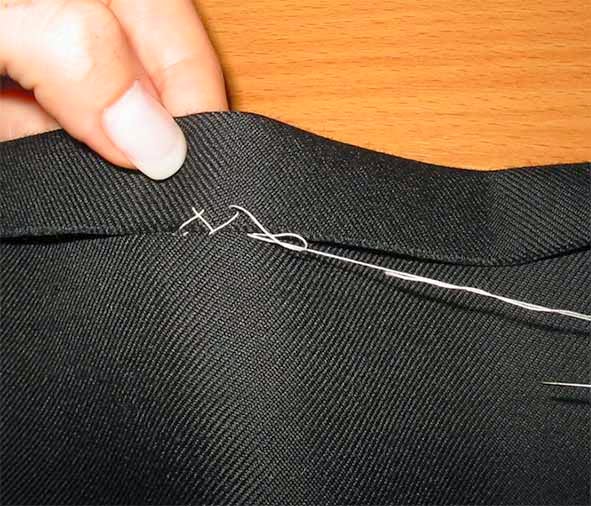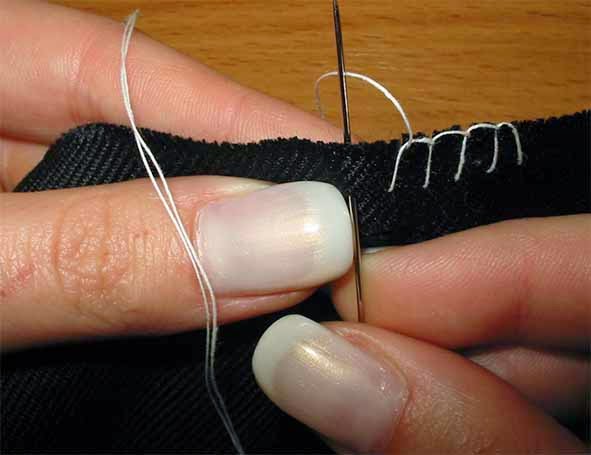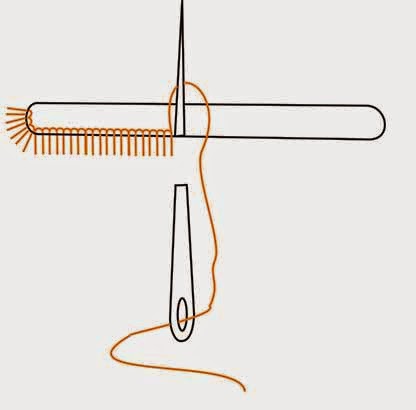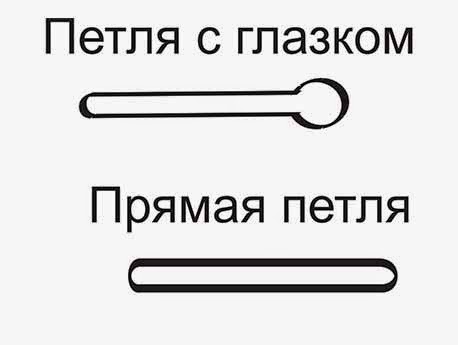Phillips and looped stitches - probably the most popular types of stitches for novice seamstresses after a running straight, at least the principles of their implementation are still on the school lessons.
Cross stitches blind stitch doing the stitch, cut firmly secured to prevent it from fraying. 
These stitches are used for podchinenija bent edges of the parts of thick crumbling fabric (the bottom of the sleeves, leaving the collar, etc.).
Place performed from left to right, piercing the fabric in the opposite direction, parallel to the cut of the ACC. The punctures on the alternate ACC and main part, wherein the bent edge of the part is pierced through, and the main part is one-half its thickness. Distance puncture from the edge of the part 0.3—0.5 cm depending on the falling of tissue. Frequency 2-3 stitches 1 cm stitches don't tighten Much. Perform stitches with silk thread No. 65,75 or cotton No. 50-80.
Looped stitches are used for serging loops slash manually in the manufacture of outer clothing for individual orders (in the absence of special machines) and for serging slices. 
For the formation of buttonhole stitch needle into the fabric from the bottom at a distance of 0.1-0.3 cm from the slit loop or 0.5-0.7 cm from the edge of the part, the end of the needle wrapped with thread and stitch are tightened. The stitches have the same distance from the edge and from each other, and the tightening of the threads produce with the same effort. 
Sewn loops are of the following types: eye and direct.

At the end of the loop tack may be placed perpendicular to the line of the cut. When the buttonhole loops the number of stitches equal to 6-10 1 cm; carry out their silk No. 3-7, cotton threads No. 10-20.
If you buttonhole cuts frequency 3 stitches on 1 cm lines.



